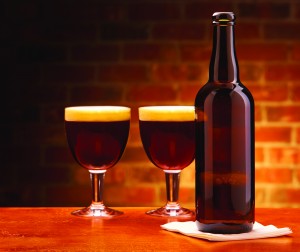The Art of Drinking Craft Beer
By: Paula Polei
With Independence Day just around the corner, many Americans have plans for family gatherings, patriotic parades, picnics, barbecues, ballgames—and drinking craft beer. The 4th of July marks the biggest beer-selling holiday of the year, and this year researchers anticipate similar outcomes.
Since so many Americans celebrate the 4th of July with craft beer, BOB wanted to take a moment to share a few tips on the proper way to enjoy your favorite beverage.
1. Choose the right beer.
With so many varieties of craft beer on the market, choosing one that meets your ideal taste is important. Below is a quick rundown of the most popular styles of craft beer.
Ales: These ferment quickly and are generally sweeter, full-bodied, and have a fruity flavor. Indian Pale Ales (IPAs) have more hops and are generally bitter. This category includes pale ales, wheat beers, bitters, porters, stouts, barley wines and brown ales.
Lagers: These ferment slowly and tend to have a crisper flavor than ales and are less hoppy. This category also includes pilsners, dunkels and Vienna-style lagers.
Stouts: These really fall under the ale category, but they are their own brew. A stout is dark and creamy, with chocolate and coffee undertone flavors. There are also oatmeal and oyster stouts.
Bitters: These are English ales that have a deep, bronze look and a well-hopped, bitter flavor. This category includes session or ordinary bitter, best or regular bitter and premium or strong bitter.
Wheat: This ale has a light, yet hazy appearance. It has a slight banana, clove, spicy or apple flavor, depending on the style. It's not bitter and it is often served with a wedge of lemon.
For a complete rundown of craft beer styles, visit http://www.craftbeer.com/beer-styles.
2. Take it slow.
When analyzing a craft beer, you can’t just inhale it and decide whether it’s great or not. Take your time, sipping it and enjoying the range of flavors within. The longer you take, the more the beer’s temperature will rise. Then, every time you go back to it, the more aromas you will savor.
3. Pour it.
When pouring the beer from a bottle, gently run the beer down the side of the glass. You can judge your pour speed based on the head that is forming. You should aim at having a two finger head when you're done. Beers that contain visible yeast at the bottom of the bottle are meant to be drank. If your beer has yeast, stop the pour with a bit of beer left in the bottle and swirl the remaining liquid to lift the yeast sediment and pour it into your glass.
4. Look at it.
Take a moment to marvel at your beer’s greatness before you partake. Raise the beer in front of you, taking a moment to relish in its color, head and consistency. Take note whether the head is thin or dense. Rocky heads are dense with dips and peaks forming as some of the bubbles pop. The color of the head is also worth noting, and can range from pure white on pilsners to light or medium brown on stouts and porters.
5. Swirl it.
Swirl your beer. This will pull out aromas, slight nuances, loosen and stimulate carbonation, while testing head retention.
6. Smell it.
Take note on whether it smells primarily of hops or malt. Generally, light colored beers smell hoppy, while darker beers have a malt, roasted, chocolate or coffee aroma. Many ales have a spicy or fruity aroma from their yeasts. It’s best to breathe through your nose with two quick sniffs, then once with your mouth open and then through your mouth only, just before you take your first sip. Always take your time with the aroma. Approximately 90-95% of what you experience is through your sense of smell. Enjoy the bouquet of flavors coming from your beer.
7. Taste it. Well, chew it.
Now, take a sip of the beer. Resist swallowing it immediately. Let it wander and explore your entire palate, letting your taste buds speak. The bitter and sweet receptors are located on the left and right side of your tongue, with salt at the front and the bitterness levels at the very back of the soft palate. Keep the beer in your mouth and move it around. It’s recommended that you try tasting the beer after it warms a bit. Cold beer masks some of the flavors. As a beer warms, its true flavors pull through and become more pronounced.
8. Repeat.
Now that you’re a craft beer drinking expert, repeat this process until you are completely satiated.
If you are one of the millions of Americans drinking beer this 4th of July holiday, BOB wants you to remember to enjoy responsibly while properly drinking your favorite craft beer!


